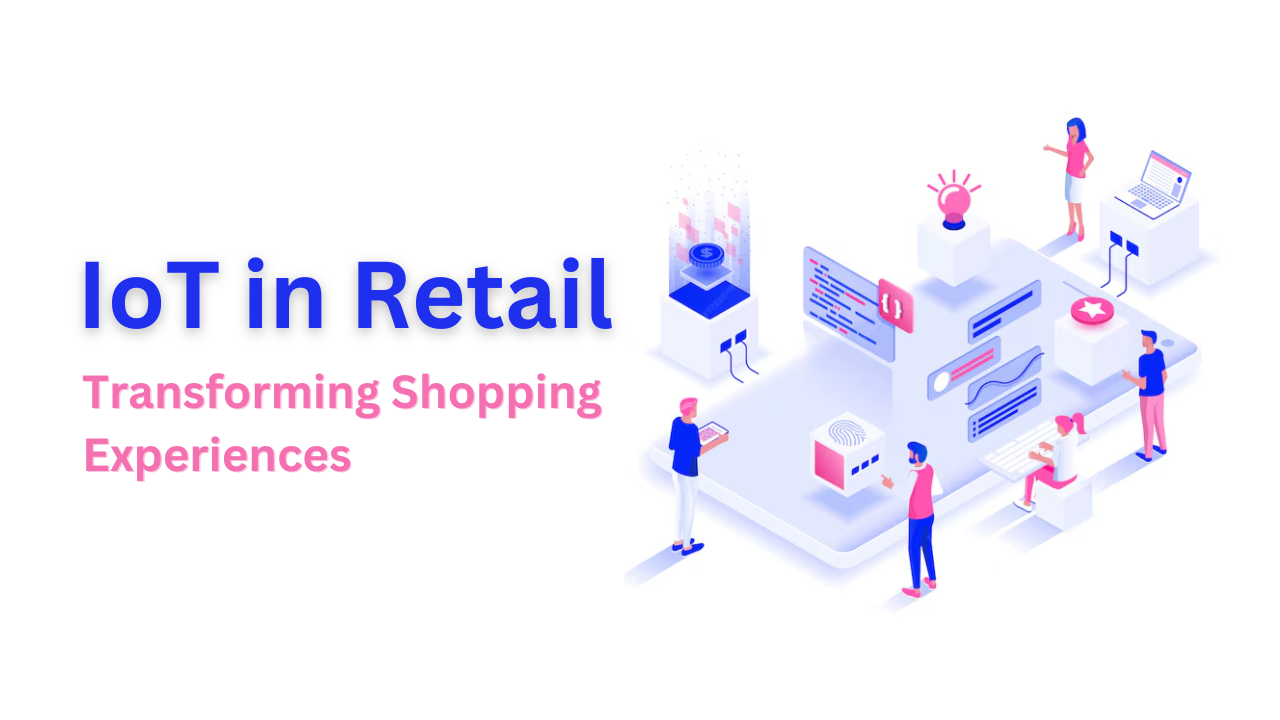
IoT in Retail – Transforming Shopping Experiences
We’ll read about the features – benefits of IoT that lowers operational costs, brings efficiency for businesses, and personalized shopping experience for customers, with examples.
It is estimated with hope that the global IoT in retail market is going to see growth in coming times due to (1) decreasing costs of IoT hardware and sensors, (2) increasing demand for seamless shopping experiences, and (3) the adoption of smart payment solutions.
This will improve operational efficiency by enabling real-time inventory tracking and management, reducing stockouts and overstock situations. Technologies like (1) RFID, (2) mobile POS systems, and (3) smart shelves minimizes errors and improves store operations.
An Internet of Things (IoT) app development platform allows developers to create mobile software applications that manage device connectivity and collect data. The platform connects different components to ensure a constant flow of communication between devices
IoT app development companies’ enables businesses develop innovative products and services, and data-driven business models. Inventory management and tracking, Asset monitoring, Product identification – are some examples of IoT applications.
An IoT app development company manages large amounts of data collected from sensors, which is stored in cloud servers or at the edge of an IoT network. It ensures that the system scales up or down depending on user needs. Encryption, authentication, and authorization mechanisms are important for protecting user data.
What does this technology bring to the table?
While expecting the technology to do just about anything isn’t the ideal case, but the use of IoT helps know which areas need disinfection. IoT is also helpful in helping shopkeepers realize the placement of the items. They get to know which items are underperforming and where should they be placed.
- IoT does provide transit routes, warehouse location, visibility into shelves, shipment location, distance travelled, temperature, ETA.
- Businesses are able to tag motion tracking sensors with their carts, connect then to an asset tracking software to know the exact location of the cart.
- Smart shelves tagged with RFID (Radio Frequency Infrared Devices) track the status of the inventory and when it needs to be replenished. This eliminates shortages and restock it before demand comes up.
- Placing digital price tags to display the contents information – in form of a digital signage makes dynamic pricing easier.
- Stores with sensors to track temperature, vibration, pressure, and other factor help in identifying sub-optimum performance which often indicates if there is a need for maintenance.
- Starbucks, as an example makes use of iBeacon technology to send promotion and sales notifications to the nearest passersby’s phone via Bluetooth.
- Amazon Go stores feature automated checkouts, where customers pick the things they want, keep in cart, and walk out of the store without having to stand in long queues to make the payment. The sensors attached to items they picked get counted in their virtual cart. They pay their balance through Amazon Apps.
- IoT devices collects data about customers’ buying habits and their expectations, allowing retailers to send targeted marketing messages. IoT tags send personalized promotions and offers directly to customers’ smartphones when they are near or in the store.
- IoT sensors monitor (1) lighting, (2) heating, and (3) cooling systems based on occupancy data, which saves energy.
- IoT provides real-time data and analytics for retailers to respond to market demands. They track (1) the location and condition of goods during transit, (2) monitor and report the temperature of perishable goods during transportation to ensure product quality and safety compliance.
- Businesses use heat maps to track customer movement within the store.
- IoT redefines the shopping experience by tracking parcels in real-time and know the exact time of delivery. IoT devices have the potential to create virtual barriers around specific locations in stores. When a customer tries to move a product from that location, an alert is triggered and a message is sent to the store manager. This informs retailers to take steps to keep goods safe, track customers and employee movements, and minimize theft and loss.
- Sensors and RFID tags track goods throughout the supply chain. Smart sleeves are used to automatically monitor inventory and send alerts when items are low or are about to expire. (1) Digital signage (2) Smart mirrors (how they look in those clothes) (3) Beacons alerts customers based on their proximity to the store, such as discounts or event information. Digital shelf tags are used to record when products are removed from shelves and update inventory databases.
- Stores/retail outlets with interconnected devices, fully or partially automated bring efficiency, resilience, and sustainability to retail space operations. They are able to operate multiple tasks with their mobile phones. Right from optimizing inventory to personalizing marketing efforts to enhancing overall shopping experience for customers, and pushing the sales and revenue.
What chances you shouldn’t take while using IoT in retail?
IoT devices use protocols for strong data encryption and authentication. They need to be regularly updated and require user permissions. Businesses need to comply with privacy regulations and obtain consent from customers for data collection and usage. IoT app development services is helpful for the new businesses in creating software and mobile applications that work with Internet of Things (IoT) devices.
Conclusion
Real-time data from IoT devices lets organizations make better decisions and improve operational visibility. It lets them detect maintenance issues, sends personalized communication, provides better customer experiences, increases customer retention, reduces downtime, optimizes resource usage, and lowers operational costs. Use of sensors also ensures customers maintain social distance in stores.


